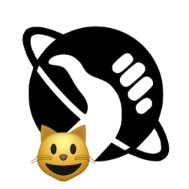-
Posts
9,176 -
Joined
-
Last visited
Everything posted by Pšenda
-

Where are the basic templates?
Pšenda replied to Jeff Rudd's topic in Affinity on Desktop Questions (macOS and Windows)
From the many reactions here on the forum, it is evident that some users love it 🙂 The unavailability of templates can be detected in the trial version within the first minute. -

Where are the basic templates?
Pšenda replied to Jeff Rudd's topic in Affinity on Desktop Questions (macOS and Windows)
Then you will definitely be using "corporate templates", not some pre-installed demos. -

Designer crashes
Pšenda replied to WinnerB's topic in Affinity on Desktop Questions (macOS and Windows)
-

StudioLink not working
Pšenda replied to Led4blue's topic in Affinity on Desktop Questions (macOS and Windows)
P.S. why does the application recommend a purchase (Buy now) to the user, when it knows - that they have already been purchased, they just need an update? -

Make snapping available for artboards
Pšenda replied to sergio's topic in Older Feedback & Suggestion Posts
Maybe I just don't understand your description, but the solution for me is the procedure described earlier: Unfortunately, this is not an optimal procedure, because the content of the artboard needs to be transferred to the new one. At the same time, double-clicking on the handle points of the artboard bounding box works, but somehow strangely - it sets the size of the artboard to a square 🙃 Which is a shame, because it could/should do content-based sizing like a Text Frame. -

Align dropdown menu to the left
Pšenda replied to Artemis21's topic in Feedback for the Affinity V2 Suite of Products
-

Designer crashes
Pšenda replied to WinnerB's topic in Affinity on Desktop Questions (macOS and Windows)
Try HW Acceleration off. -

Add symmetry vector based tools.
Pšenda replied to MxHeppa's topic in Feedback for the Affinity V2 Suite of Products
If your shapes are more complex, you can use these simple shapes (after Convert to Curve and with the appropriate Snapping settings) to create an outline for the exact placement of your shapes/symbols. -

Add symmetry vector based tools.
Pšenda replied to MxHeppa's topic in Feedback for the Affinity V2 Suite of Products
Why don't use Symbols? https://affinityspotlight.com/article/how-to-use-symbols-in-affinity-designer/ -

Affinity File Help
Pšenda replied to Aust15's topic in Affinity on Desktop Questions (macOS and Windows)
I once recommended Serif to use a very simple and very easy to implement function of creating an index backup file (with an optional setting of the number/steps of backup files). This would create a certain simple way of versioning/backup, where the user can easily return to the previous version of the file - either after making an unwanted modification or after it has been damaged (unfortunately still very often with Afinity). -

Affinity File Help
Pšenda replied to Aust15's topic in Affinity on Desktop Questions (macOS and Windows)
-

Affinity File Help
Pšenda replied to Aust15's topic in Affinity on Desktop Questions (macOS and Windows)
Try looking in the Recent files dialog (menu File, Open Recent, More...) - the folder where you saved the file should appear in the tooltip of the relevant file. Maybe the folders or files got mixed up. -

Panel Label Prominence / Contrast
Pšenda replied to Viktor CR's topic in Feedback for the Affinity V2 Suite of Products
The fields with tab names have a "hamburger" menu on the right, which makes it easier to navigate the panels. -

Affinity Publisher - A2 documents
Pšenda replied to Bob May's topic in Affinity on Desktop Questions (macOS and Windows)
-
I was worried that Serif might change his mind during these six years. But now it's finally definitive - Repeat is Repeat, and there can be no doubt about that 🙂 P.S. Serif, as a winner of the "Windows developer award", certainly knows these rules well, but if anyone is interested in the rules and recommendations for creating and using Tooltips, for example: https://learn.microsoft.com/en-us/windows/apps/design/controls/tooltips
-
Thank you for the significant progress in user-friendliness. I finally know that Repeat means Repeat and Stretch is Stretch, ...
-

Repair Corrupt Designer File
Pšenda replied to joshuacrockett's topic in Affinity on Desktop Questions (macOS and Windows)
For important and extensive projects backup is also worth it. You write that the damage most likely occurred by saving to the cloud. Does this cloud have file versioning/history? That way, at least the previous version could be restored before it was damaged. -

Under Exposed Raw vs. Jpg
Pšenda replied to Amadeus47's topic in Affinity on Desktop Questions (macOS and Windows)
It is discussed quite often on the forum: https://www.google.com/search?q=underexposed+RAW+site:https://forum.affinity.serif.com -
Not only does this require consistency and it is also a lot of work, but often the parameters of the layer will be affected in an undesirable way - for example, accidentally pressing a numeric key, hovering the mouse over the Opacity field while scrolling the document, etc. This is easily solved, for example, by the IDE from Embarcadero, where the non-standard/non-default option is highlighted in bold text. At first glance, it is immediately obvious that the user has changed/modified the given parameter. Some similar indicator in our case would indicate that the visibility/blend of the layer has been modified and affected somehow.







